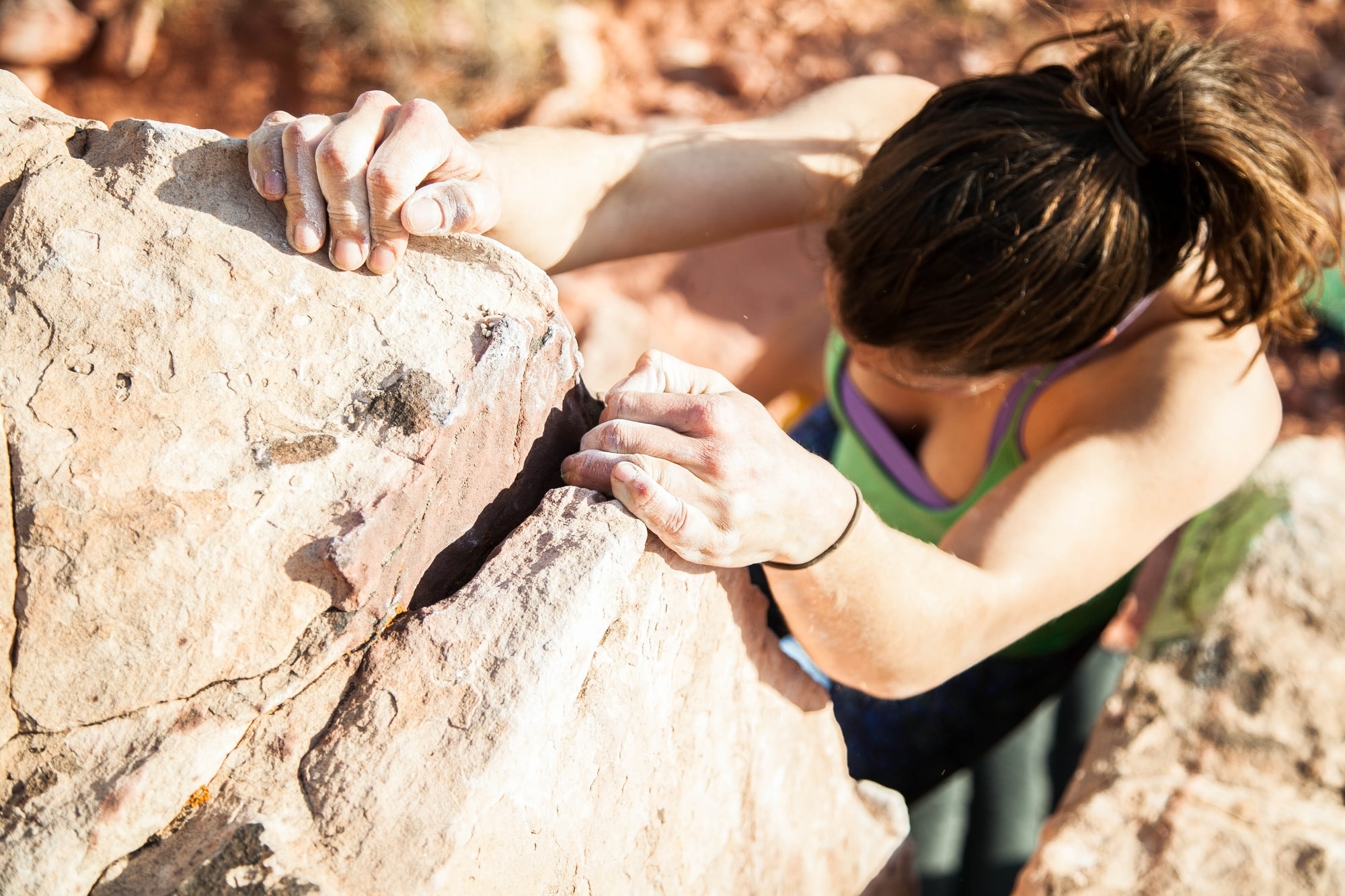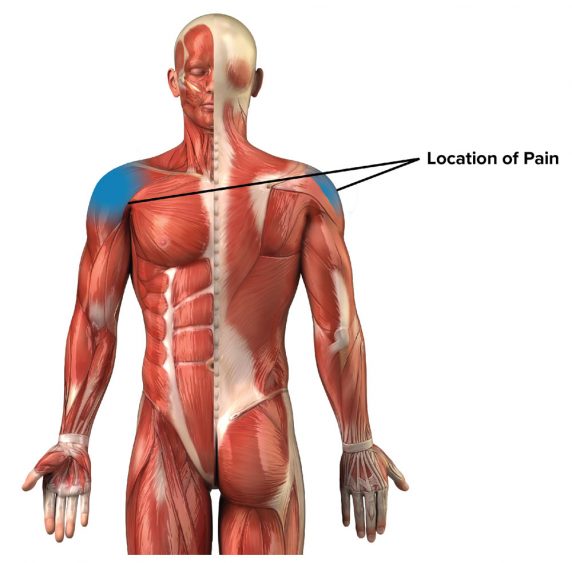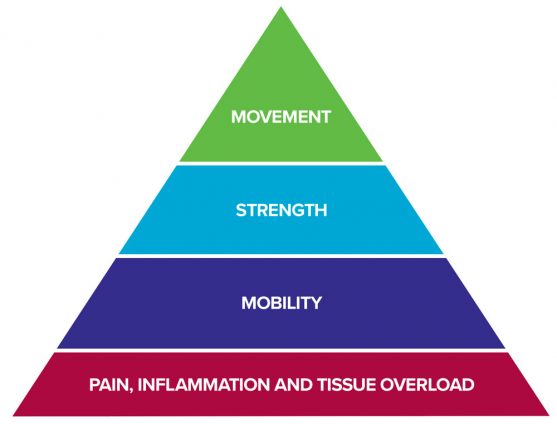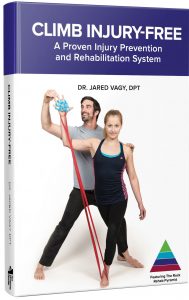
You clip the chains of your most recent project and throw your hands up in triumph. After all of your hard work and training, you finally sent it. As you lower your hands from overhead, you feel a soreness in your shoulder. You try to shake it off, but it lingers for days. Your shoulder begins to hurt after every climb. Days turn into weeks and you are not getting better. You lie down on your side in bed to read the latest in climbing, and as you scan the headlines and dream of climbing 5.15, you feel your shoulder ache.
What’s going on?
It’s likely that you have shoulder impingement.
The tendons in the shoulder slide through a very narrow passageway and attach to the shoulder bone. Impingement occurs when the space between the bones in this passageway is reduced. This can occur from repetitively moving the shoulder into a stressful or suboptimal position—common in climbing. When this occurs, the bones in the shoulder pinch down on the tendons and cause shoulder impingement.
The signs and symptoms of shoulder impingement are:
• Dull ache in the front or side of the shoulder.
• Painful to lie on the shoulder.
• Discomfort lifting the arm, reaching across body and behind the back.

Shoulder impingement. Photo: courtesy of Dr. Jared Vagy
Although many climbers know exercises that decrease shoulder impingement, few climbers know how to sequence and advance their injury prevention and rehabilitation programs.
When I first starting writing about climbing injuries, there was little information available. Since then, many books, blogs, social media posts, magazine articles and videos have been created that specifically address climbing injuries. Now there is almost too much information available. This abundance of injury advice makes it challenging to know exactly what information to trust. Too much knowledge without a framework can slow or even halt recovery.
Therefore, it is essential to have a plan when addressing climbing injuries to sequence and advance the rehabilitation process.
The “Rock Rehab Pyramid” is a step-by-step rehabilitation and injury prevention plan designed specifically for rock climbers. The goal of the four-phase process is to take you from the pain, inflammation and tissue overload stage to gain full mobility, strength and eventually pain-free climbing movement. It is featured in my new book, Climb Injury-Free.
Most climbers begin the rehabilitation process at the bottom of the pyramid, which is the pain, inflammation and tissue-overload phase. Through the rehabilitation process, you will progressively advance up the pyramid. The goal is to gain full mobility, strength and eventually pain-free climbing movement. At this point, you will achieve full recovery.
The Rock Rehab Pyramid

Contents of the Pyramid
Phase 1 – Pain, Inflammation and Tissue Overload: Uses traction and taping techniques to unload the tissues. You can perform tissue unloading for as long as it takes for your pain at rest to subside.
Phase 2 – Mobility: Uses three progressive stretching exercises to improve range of motion. Each exercise can be performed up to three times per day.
Phase 3 – Strength: Uses three progressive resistive exercises to increase strength. Each exercise can be performed daily.
Phase 4 – Movement: Comprised of three movement advice tips and should be implemented during each session of climbing.
When to Progress to the Next Phase of the Pyramid
Once you are able to perform the prescribed exercises in a given phase of the pyramid without pain then you can progress to the next phase. Do not perform exercises if they are painful. There is no exact formula for how long it takes a climber to progress back to climbing and movement training. It is highly variable based on your injury and individual factors.
The Rock Rehab Pyramid can be used to prevent and rehabilitate any climbing injury. See the video below to learn how to navigate and use the pyramid.
This article is the first in a five-part series that will focus on how to use the pyramid to treat shoulder impingement. Stay tuned next week to learn the best research-based technique to address the “Pain, Inflammation and Tissue Overload” phase of the pyramid to treat shoulder impingement.
The Rock Rehab Pyramid introduction video
 To learn more about how to prevent shoulder impingments and other climbing-related injuries, check out The Climbing Doctor’s new book, Climb Injury-Free
To learn more about how to prevent shoulder impingments and other climbing-related injuries, check out The Climbing Doctor’s new book, Climb Injury-Free .
.
Featuring the step-by-step “Rock Rehab Pyramid,” readers will learn a research-supported rehabilitation and injury prevention system designed specifically for rock climbers.
If you liked this article, we think you’ll also enjoy:
- Video: Climb Injury-Free — How To Prevent A Pulley Sprain
- How to Test Your Muscle Strength and Monitor Recovery for Climbing
- Emerging Concepts in Injury Prevention: Pulley Strain
- The Climbers’ Project: Exercises to Help you Climb Longer and Stronger by Preventing Shoulder Injury
Lastly, don’t forget to check out our most popular articles ever published, free rock climbing eBooks, and the internet’s best climbing gear sales.







